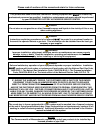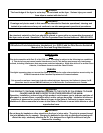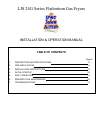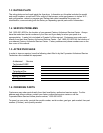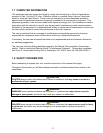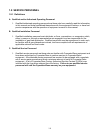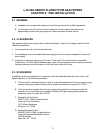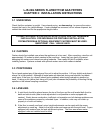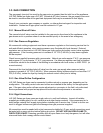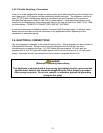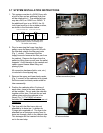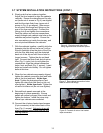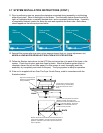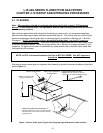
2-2
2.3 STANDARDS (cont.)
E. NFPA Standards #96 and #211 (latest edition)
National Fire Protection Association
470 Atlantic Avenue
Boston, MA 02110
WARNING
Local building codes will usually not permit a deep fat fryer with
an open tank of hot oil to be installed immediately next to an
open flame of any type, whether a broiler or the open burner of a
range. Check local codes before beginning installation.
2.4 AIR SUPPLY & VENTILATION
The area around the appliance must be kept clear to avoid airflow obstruction of
combustion and ventilation air as well as for ease of maintenance and service. Never use
the interior of the fryer cabinet for storage.
A. Means must be provided for any commercial, heavy-duty cooking appliance to exhaust
combustion wastes to the outside of the building. It is essential that a deep fat fryer be
located under an approved exhaust hood or that an exhaust fan be provided in the wall
above the unit, as exhaust gas temperatures are in the vicinity of 450°F-600°F (232-343°C).
Exhaust hoods and air conditioning systems can produce slight air drafts in the room, which
can interfere with pilot or burner performance. Air movement patterns should be defined
during installation. If pilot or burner problems arise or persist, alteration of air movement
patterns will be required.
B. Do not place the flue outlet of the fryer directly into the plenum of the hood; fryer gas
combustion will be affected.
C. Exhaust temperatures, in addition to the open tank of hot oil, make the storage of anything
on shelving over or behind the fryer unsafe.
D. Filters and drip troughs should be part of any industrial hood. Consult local codes before
installing an industrial hood.
2.5 ALTITUDE
The input rating (BTU/hr) of LJS 24G Series fryers is rated for elevations up to 2,000 feet (610
Meters). For elevations above 2,000 feet (610 Meters), the rating should be reduced four percent
for each additional 1,000 feet (305 Meters) above sea level.



